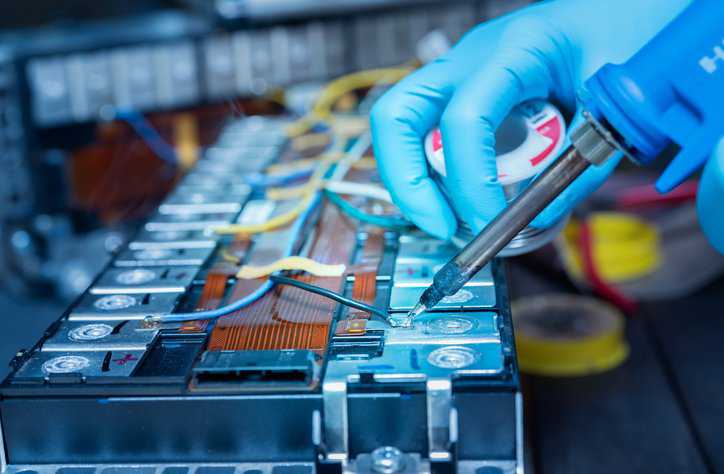The lithium-ion battery was first proposed by university researchers in England and Japan in the 1980s. However, it did not become commercially available until the Sony Corporation introduced it in 1991. There had been previous attempts at rechargeable batteries, but they were proprietary to each inventor. Lithium-ion eventually became a standard design that offered higher energy density, longer life cycles, and lighter weight compared to previous rechargeable battery technologies. ANSI C18.4M-2023: Portable Cells And Batteries – Environmental provides guidance on regulations applicable to batteries as well as procedures for measuring environmental characteristics.
What Is ANSI C18.4M?
ANSI C18.4M-2023 sets general considerations that should be taken into account when developing battery Standards. These considerations should balance the need to achieve the intended product performance while reducing adverse environmental effects. This American National Standard also outlines ways in which provisions in battery standards might affect the environment throughout the life cycle of battery products. Environmental stewardship in the battery industry embraces design, manufacturing, transportation, storage, disposal, and recycling of the batteries.
The standard recommends the use of recognized scientific methodologies when developing battery Standards that incorporate environmental aspects. ANSI C18.4M-2023 further notes that when developing Standards, it is important to recognize there are U.S. and global regulations concerning environmental aspects of substances in batteries and the disposal of batteries at end of life. When making provisions to existing battery Standards, ANSI C18.4M-2023 details these provisions should achieve the product’s purpose in order to avoid excessive or inefficient material or energy use.
Lead-Acid Batteries
The lead–acid battery is a type of rechargeable battery first invented in 1859 by French physicist Gaston Planté. It is the first type of rechargeable battery ever created. The lead-acid battery consists of two electrodes immersed in a sulfuric acid solution. It is able to supply high surge currents and is found in certain thermal vehicles or computers. Compared to modern rechargeable batteries, however, lead–acid batteries have relatively low energy density. This means they have less energy and thus are discharged more quickly. The good news is that according to the Battery Council International, 99% of lead-acid batteries, the most widely used batteries, are recyclable.
The problem, however, is when lead-acid batteries are incorrectly disposed of and/or end up at improper recycling facilities. For example, lead-acid batteries typically last only about two years in warmer climates because heat causes them to degrade more quickly, meaning they need to be recycled frequently. However, there are few facilities that can safely do this in Africa. Instead, these batteries are often cracked open and melted down in back yards. This process exposes the recyclers and their surroundings to lead, a potent neurotoxin that has no known safe level and can damage brain development in children.
Lithium-Ion Batteries
The lithium-ion battery is based on the reversible exchange of the lithium ion between a positive electrode (a lithium transition metal oxide) and a negative graphite electrode. Its advantage is the massive energy it can deploy and is commonly found in watches, mobile phones, laptops, and electric cars. Its longer lifespan (the life span of a lithium-ion battery is 3 to 10 years depending on the number of recharge cycles) compared to traditional batteries reduces the frequency of replacement, indirectly contributing to waste reduction. Lithium-ion batteries also store excess energy produced by wind and solar power, ensuring a steady supply even during periods of low energy production.
Are Batteries Bad for the Environment?
Although lithium-ion batteries may be less toxic, they still need to end up at operations that can safely recycle them. Lithium batteries contain chemicals such as manganese, cobalt, and nickel that are harmful to the environment when not properly handled. When they are exposed to water supply systems and ecosystems, for instance, they end up contaminating the water and destroying aquatic life. Since these batteries have valuable metals, there is also a financial incentive to recycle them.
Making sure lithium-ion batteries, especially those that are smaller, get properly collected and recycled supports the growing battery recycling industry. Sending end-of-life batteries for recycling also keeps them out of the household garbage and recycling systems, where they can start fires and endanger workers and nearby communities.
Battery Disposal
ANSI C18.4M-2023 specifies that batteries should be designed so that, if they are not recycled, they will not result in adverse environmental impacts when disposed of in landfills, incinerators, or other locations. Batteries should be disposed of in accordance with local laws and regulations. A visit to the local solid waste association will provide information about local laws and regulations for batteries.
ANSI C18.4M-2023: Portable Cells And Batteries -Environmental is available on the ANSI Webstore.
